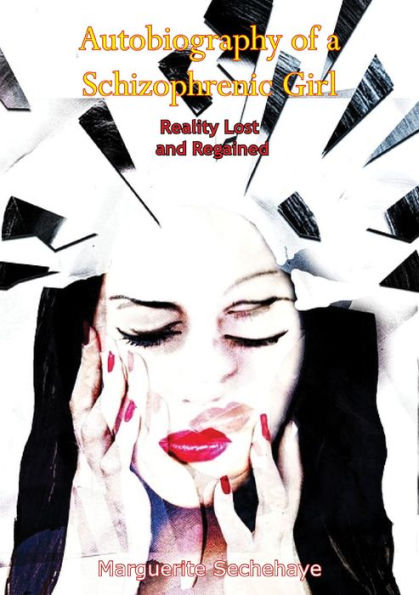Autobiography of a Schizophrenic Girl: Reality Lost and Regained
Marguerite Sechehaye, a Swiss psychotherapist, followed the work of Sigmund Freud and Jean Piaget closely, believing there was a link between psychosis and trauma experienced as a child. One of her most notable cases was undertaken with a psychotic patient referred to as "Renée", a pseudonym used for Louisa Düss, whom she and her husband Albert Sechehaye eventually adopted.
Over the course of their work together, Dr. Sechehaye took the unique approach of chronicling "Renee's" journal entries and personal reflections in tandem with her own clinical commentary. The approach significantly influenced mental illness research by introducing an antipsychiatry framework that positioned the patient's experiences as a valid means of establishing their case histories.
As a result of this work, Autobiography of a Schizophrenic Girl: Reality Lost and Regained was first published in 1951, highlighting the most memorable aspects of the disease. The book remarkably reveals to the "normal" mind the emotional shadings, perceptions, confusions, and tortures of a mind at the brink of dissolution. It is at once a harrowing experience and a magnificently moving testimonial to the capacity of a human being to survive and triumph.
1131919748
Over the course of their work together, Dr. Sechehaye took the unique approach of chronicling "Renee's" journal entries and personal reflections in tandem with her own clinical commentary. The approach significantly influenced mental illness research by introducing an antipsychiatry framework that positioned the patient's experiences as a valid means of establishing their case histories.
As a result of this work, Autobiography of a Schizophrenic Girl: Reality Lost and Regained was first published in 1951, highlighting the most memorable aspects of the disease. The book remarkably reveals to the "normal" mind the emotional shadings, perceptions, confusions, and tortures of a mind at the brink of dissolution. It is at once a harrowing experience and a magnificently moving testimonial to the capacity of a human being to survive and triumph.
Autobiography of a Schizophrenic Girl: Reality Lost and Regained
Marguerite Sechehaye, a Swiss psychotherapist, followed the work of Sigmund Freud and Jean Piaget closely, believing there was a link between psychosis and trauma experienced as a child. One of her most notable cases was undertaken with a psychotic patient referred to as "Renée", a pseudonym used for Louisa Düss, whom she and her husband Albert Sechehaye eventually adopted.
Over the course of their work together, Dr. Sechehaye took the unique approach of chronicling "Renee's" journal entries and personal reflections in tandem with her own clinical commentary. The approach significantly influenced mental illness research by introducing an antipsychiatry framework that positioned the patient's experiences as a valid means of establishing their case histories.
As a result of this work, Autobiography of a Schizophrenic Girl: Reality Lost and Regained was first published in 1951, highlighting the most memorable aspects of the disease. The book remarkably reveals to the "normal" mind the emotional shadings, perceptions, confusions, and tortures of a mind at the brink of dissolution. It is at once a harrowing experience and a magnificently moving testimonial to the capacity of a human being to survive and triumph.
Over the course of their work together, Dr. Sechehaye took the unique approach of chronicling "Renee's" journal entries and personal reflections in tandem with her own clinical commentary. The approach significantly influenced mental illness research by introducing an antipsychiatry framework that positioned the patient's experiences as a valid means of establishing their case histories.
As a result of this work, Autobiography of a Schizophrenic Girl: Reality Lost and Regained was first published in 1951, highlighting the most memorable aspects of the disease. The book remarkably reveals to the "normal" mind the emotional shadings, perceptions, confusions, and tortures of a mind at the brink of dissolution. It is at once a harrowing experience and a magnificently moving testimonial to the capacity of a human being to survive and triumph.
2.99
In Stock
5
1

Autobiography of a Schizophrenic Girl: Reality Lost and Regained
89
Autobiography of a Schizophrenic Girl: Reality Lost and Regained
89
2.99
In Stock

Product Details
| ISBN-13: | 9781789124989 |
|---|---|
| Publisher: | Muriwai Books |
| Publication date: | 12/01/2018 |
| Sold by: | Bookwire |
| Format: | eBook |
| Pages: | 89 |
| File size: | 597 KB |
About the Author
From the B&N Reads Blog
